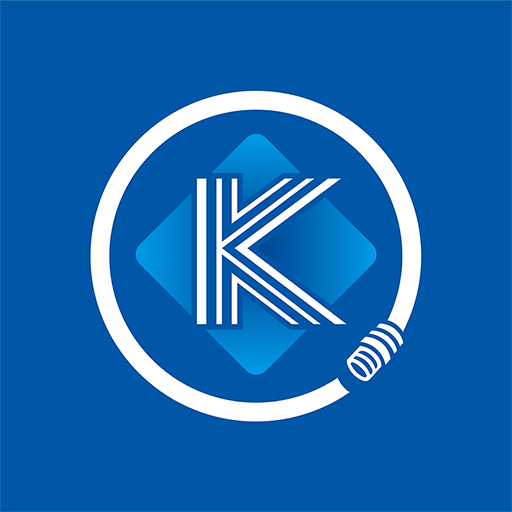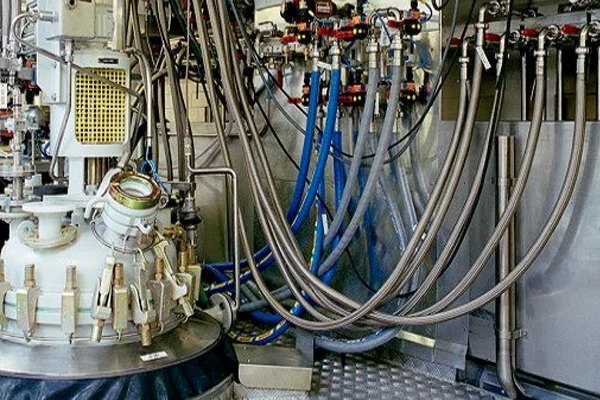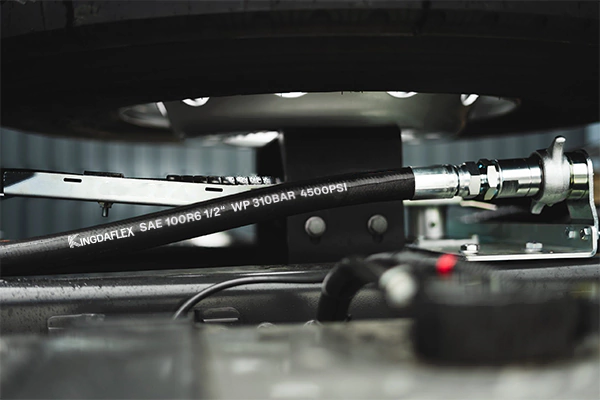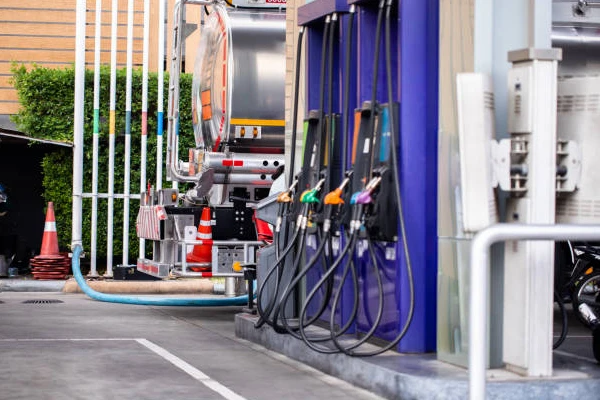Properly installing a PTFE hose assembly is a critical step for ensuring the integrity and safety of any fluid transfer system. A flawless installation prevents costly leaks, premature system failure, and safety hazards. This guide provides a detailed, step-by-step process to help you achieve a professional-quality, leak-proof connection every time.
PTFE hoses are a premium choice for demanding applications, but their benefits are only realized with correct assembly. Whether you are building a custom fuel line for a performance vehicle or installing a chemical transfer line, mastering the installation process is the key to achieving long-term reliability and peak performance.
What are PTFE Hoses?
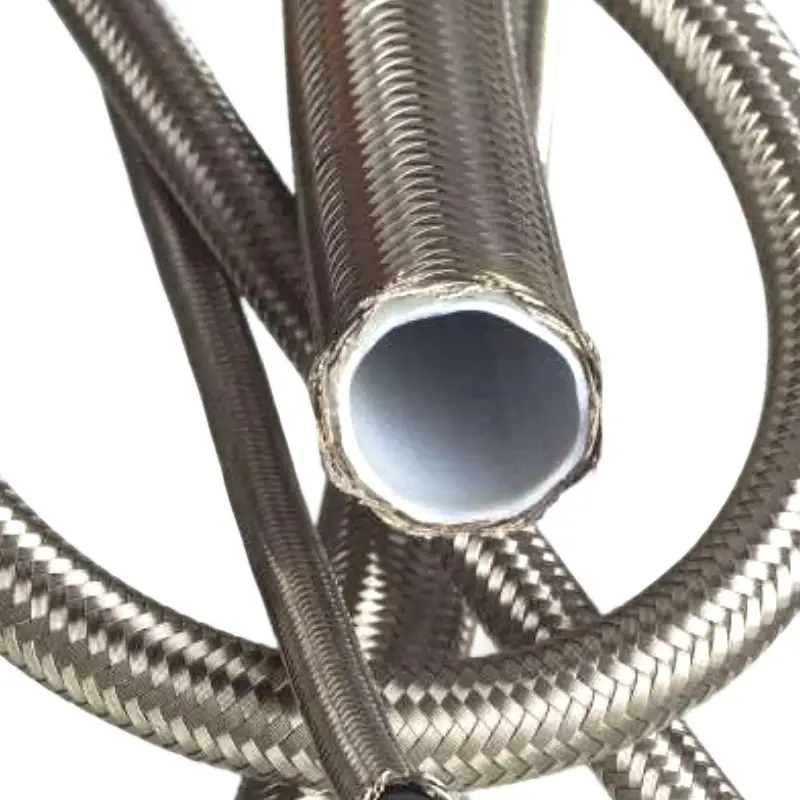
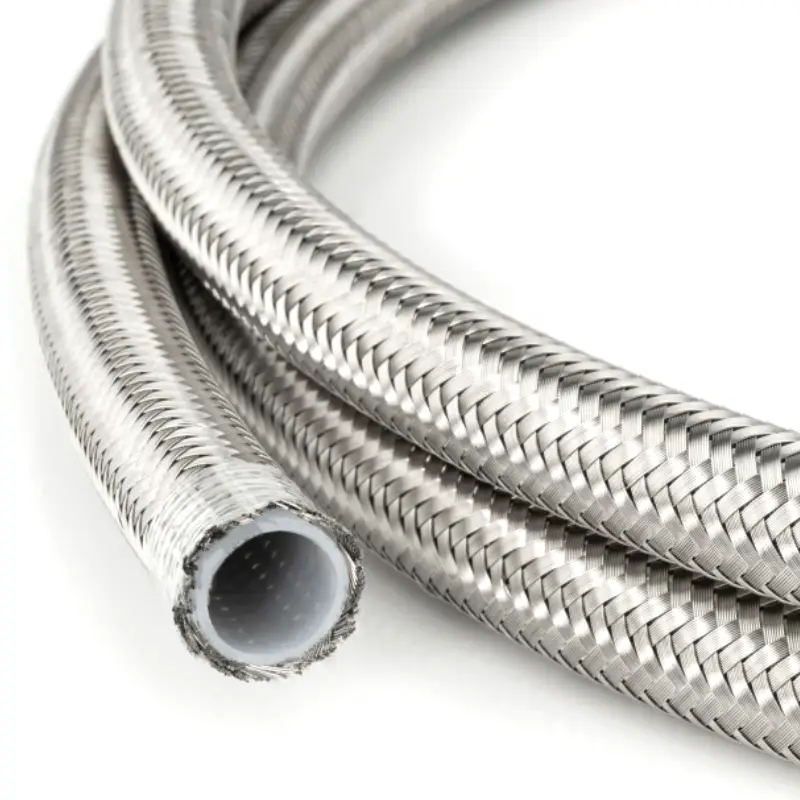
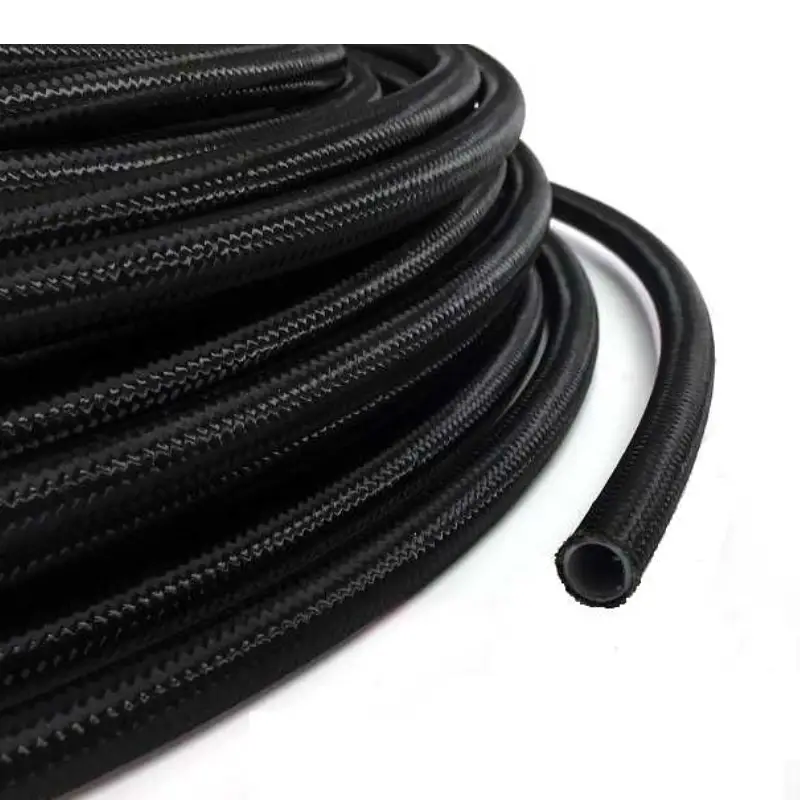
A PTFE hose is a type of industrial hose with an inner core made from PTFE (Polytetrafluoroethylene), a synthetic fluoropolymer commonly known by the brand name Teflon. This core is typically reinforced with an outer layer of braided stainless steel or synthetic fiber. The defining characteristics of a PTFE hose are its exceptional chemical and heat resistance.
The PTFE inner core is highly inert, making it compatible with a vast range of aggressive chemicals, acids, and solvents that would degrade other types of rubber or plastic hoses. Its smooth, non-stick surface also prevents material buildup, ensuring a clean and consistent flow. The outer braided layer provides the necessary strength to withstand high pressures, making the hose incredibly durable and reliable for demanding applications in industries such as chemical manufacturing, aerospace, and food processing.
Preparation for PTFE Hose Assemblies
Proper preparation is the most critical step for a successful PTFE hose assembly. Without it, you risk damaging the hose, having a faulty seal, and creating a potential leak that could lead to system failure. The process involves meticulous cleaning, precise cutting, and gathering the right tools to ensure a perfect, professional-quality installation.
- Gather the Right Tools: A fine-toothed hacksaw or specialized hose cutter, a sturdy vice with soft jaws, electrical tape, a tape measure, and a compatible wrench set are essential. You may also need a deburring tool and a clean cloth.
- Cleanliness is Key: Before you begin, ensure both the PTFE hose and the fittings are completely free of dirt, dust, and any debris. Contaminants can prevent a proper seal and cause system issues down the line.
- Measure with Precision: Accurately measure the required hose length, accounting for any bends and routing complexities. It’s always better to measure twice and cut once, as a mistake can render the hose unusable.
- Secure and Cut: Firmly secure the hose in the vice and tightly wrap the cut area with electrical tape. This prevents the outer stainless steel braid from fraying, which is crucial for a clean cut and a secure fit with the fittings.
- Inspect Components: Before assembly, carefully inspect all parts—the hose, the fittings, and any ferrules or olives—for any defects, cracks, or deformities. A visual inspection can save you from a costly and time-consuming re-installation.
How to Install PTFE Hoses?
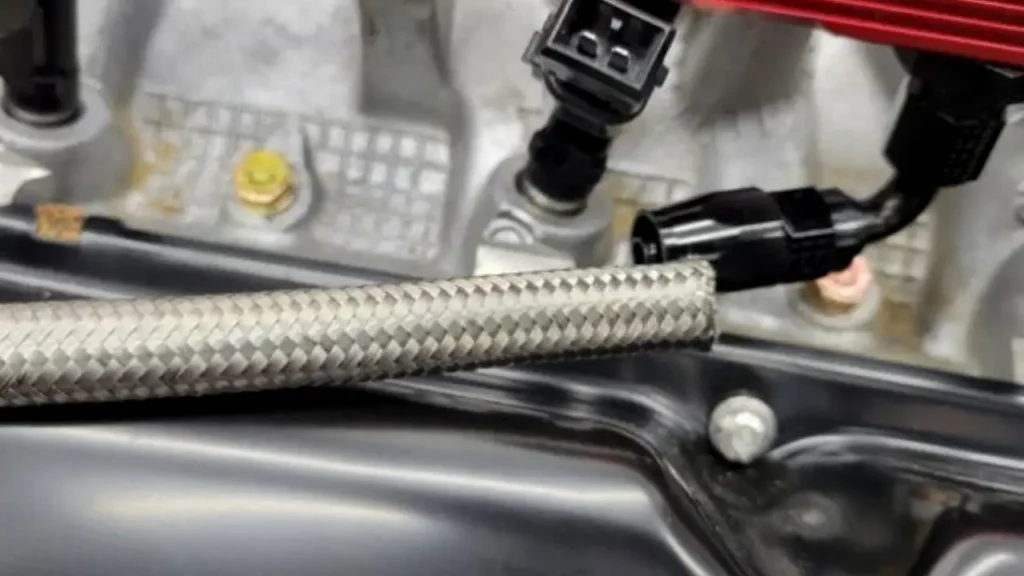
Once your PTFE hose and fittings are properly prepared, the installation process requires careful and precise execution. Following these steps ensures a secure, leak-proof connection that will stand up to high-pressure and extreme conditions.
PTFE Hose Assembly Tool
Proper PTFE hose assembly requires more than just standard wrenches; specialized tools are essential for achieving a reliable, leak-free connection. The right tools prevent common issues like frayed braiding, damaged threads, and improper seals, ensuring a professional result that will perform under pressure.
- Specialized PTFE Hose Cutter: This tool provides a clean, straight cut that prevents the stainless steel braid from fraying.
- Bench Vice with Soft Jaws: A sturdy vice is necessary to hold the hose securely during cutting and assembly without damaging the braiding.
- Torque Wrench: Critical for tightening fittings to the manufacturer’s specified torque, preventing over-tightening or leaks.
- Crimping Machine: Used for permanent, crimp-style fittings to create a durable and high-strength seal between the hose and fitting.
Step 1: Prepare the Fitting
Start by sliding the female socket of the fitting over the hose. Ensure the threads are facing the correct direction. This is a crucial step that is often overlooked; once the male part is installed, it is extremely difficult to reverse.
Next, carefully insert the olive or ferrule over the PTFE core and push it against the cut end of the hose. This small component is key to creating the initial seal between the core and the fitting. Ensure it is seated properly.
Step 2: Thread the Nipple
Lubricate the threads of the nipple with a light oil or assembly lube. Carefully insert the nipple into the hose end, making sure it engages properly with the threads of the socket. You should be able to thread it in by hand for the first few turns.
This initial hand-threading helps prevent cross-threading, which can permanently damage the fitting and ruin the assembly. If you feel any resistance, stop and realign the components before continuing with a wrench.
Step 3: Tighten and Torque
Using two wrenches, one to hold the socket and one to turn the nipple, begin tightening the fitting. Apply firm, steady pressure. Tighten until the fitting is fully seated and the gap between the socket and nipple is no longer closing.
It is important to use the correct torque specifications provided by the manufacturer. Over-tightening can crush the hose and damage the seal, while under-tightening can lead to leaks. A final check with a torque wrench ensures a perfect connection.
How to Check PTFE Hose Installation?
Checking a PTFE hose installation is crucial for preventing leaks and ensuring system reliability. You can check the installation by performing a visual inspection, a pressure test, and a final operational check.
Visual Inspection
Start by visually inspecting the entire hose assembly. Look for any signs of damage to the hose, such as kinks or abrasions on the braiding. Ensure the hose is routed correctly, avoiding any sharp edges, hot surfaces, or moving parts that could cause abrasion over time. Check that the fittings are properly seated and that there is no visible gap between the fitting and the hose. Confirm that the threads are not cross-threaded and that the fittings are securely tightened.
Pressure Test
A pressure test is the most reliable way to confirm a leak-free installation. This involves pressurizing the system to its maximum working pressure or slightly higher (as per manufacturer guidelines), but never exceeding the hose’s burst pressure rating. Use a pressure gauge to monitor for any pressure drop over a specified period. A drop in pressure indicates a leak. You can use a leak detection spray or soapy water solution on the fittings and along the length of the hose to visibly see bubbles forming at the leak source.
Operational Check
After a successful pressure test, the final step is to perform an operational check. Run the system under normal working conditions and monitor for leaks, vibrations, or unusual noises. Check the connections one last time while the system is running. If the system is performing correctly with no signs of leaks or stress, the installation is sound. This final check confirms that the hose assembly performs as expected under dynamic conditions.
Conclusion
In conclusion, the proper installation of a PTFE hose assembly is non-negotiable for system performance and safety. A clean cut, precise assembly, and final torque check ensure a reliable, leak-free connection that can withstand the rigors of extreme temperatures and high pressure. By following these steps, you safeguard your system against costly failures and ensure its longevity.
For professionals and businesses, the integrity of your fluid transfer systems is paramount. We understand the importance of components that are not only high-quality but also designed for seamless installation. Trusting your supply chain with durable, reliable products is the first step toward guaranteeing the quality and safety of your work.
For all your wholesale PTFE hose needs, rely on Kingdaflex. We are committed to supplying expertly-engineered, high-performance hoses that are easy to install and built to last. Partner with us to ensure your projects are built on a foundation of quality and performance, from the first cut to the final, secure connection.

